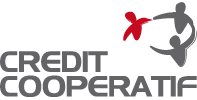

L’OMS publie de nouvelles directives pour le traitement de la malnutrition aiguë sévère chez l’enfant
Source : OMS / WHO
27 NOVEMBRE 2013 | GENÈVE - L’Organisation mondiale de la Santé (OMS) a publié aujourd’hui de nouvelles directives thérapeutiques pour soigner les presque 20 millions d’enfants de moins de cinq ans qui souffrent de malnutrition aiguë sévère dans le monde.
On parle de malnutrition aiguë sévère quand un enfant souffre d’émaciation sévère s’accompagnant ou non d’un œdème dû à la rétention d’eau. L’enfant et le nourrisson en sont atteints quand leur alimentation ne leur apporte pas assez d’énergie, de protéines et de micronutriments et qu’ils souffrent d’autres problèmes de santé comme des infections à répétition. Elle est diagnostiquée quand la circonférence du bras est inférieure à 115 mm ou quand le rapport poids/taille de l’enfant est fortement réduit.
Les enfants atteints de malnutrition aiguë sévère sont parmi les personnes les plus vulnérables au monde. Ils sont très maigres: leur organisme a utilisé la plus grande partie de la graisse et de la masse musculaire du corps pour rester en vie.
Recommendations principales
Dans ses directives actualisées, l’OMS recommande de donner aux enfants atteints de malnutrition aiguë sévère qui n’ont pas de complications nécessitant une hospitalisation des aliments énergétiques spéciaux et des antibiotiques pour traiter les infections. Ils peuvent ainsi se rétablir à domicile, au sein de leur famille. Les directives indiquent aussi le traitement à leur administrer en cas d’infection à VIH et comment traiter la malnutrition sévère chez les enfants de moins de six mois.
«Ces directives sont cruciales car, souvent, les enfants atteints de malnutrition aiguë sévère ne sont pas pris en compte dans les plans de santé nationaux, ce qui peut leur être fatal. Si ces enfants ne reçoivent pas les soins médicaux et nutritionnels adéquats, très souvent, ils meurent» commente le Dr Francesco Branca, Directeur du Département de l’OMS Nutrition pour la santé et le développement.
Nouvelles technologies, nouvelles opportunités
Les nouvelles directives remplacent celles que l’OMS a publiées en 1999, dans lesquelles elle recommandait d’hospitaliser tous les enfants souffrant de malnutrition sévère, de leur donner une préparation lactée enrichie et un traitement adéquat, antibiotiques compris.
Les directives ont été actualisées pour tenir compte des nouvelles technologies qui permettent de prendre en charge à domicile les enfants souffrant de malnutrition aiguë sévère qui ont de l’appétit et ne présentent aucune complication manifeste en leur donnant des aliments spécialement composés qui sont source d’énergie et de nutriments parallèlement à des antibiotiques.
«C’est généralement mieux pour les enfants et pour leur famille si les enfants sont soignés en ambulatoire», explique le Dr Elizabeth Mason, Directeur du Département de l’OMS Santé de la mère, du nouveau-né, de l’enfant et de l’adolescent. «C’est souvent plus facile pour les familles qui doivent continuer à s’occuper d’autres enfants et cela permet aux enfants malnutris et vulnérables de rester chez eux sans être exposés au risque d’infection nosocomiale.»
L’administration d’antibiotiques par anticipation est importante, car le système immunitaire d’un enfant gravement malnutri est quasiment à l’arrêt. L’absence de réponse immunitaire signifie que l’organisme est incapable de lutter contre les infections et qu’en cas d’infection, les tests ne mettront pas forcément celle-ci en évidence. Il est attesté qu’un antibiotique à large spectre comme l’amoxicilline permet à l’organisme de l’enfant de résister aux infections courantes telles que la pneumonie et les infections urinaires, qui peuvent être mortelles pour ce groupe d’enfants.
Toutefois, la nouvelle recommandation concerne spécifiquement les enfants atteints de malnutrition aiguë sévère, et non ceux qui sont seulement dénutris. L’utilisation généralisée d’antibiotiques chez les enfants qui n’en ont pas besoin augmenterait le risque de résistance des agents infectieux à des antibiotiques salvateurs, et nuirait ainsi à la santé et à la survie de tous les enfants.
Enfants VIH-positifs et malnutrition aigüe sévère
Autre nouvel aspect des directives: le traitement des enfants atteints de malnutrition aiguë sévère qui sont contaminés par le VIH. Les directives de 1999 ne recommandaient pas le dépistage du VIH chez les enfants souffrant de malnutrition aiguë sévère. À l’époque, les médicaments antirétroviraux n’étaient guère disponibles et on n’avait peu d’expérience de leur usage chez l’enfant.
Les circonstances sont très différentes aujourd’hui. On sait désormais que les antirétroviraux augmentent beaucoup les chances de survie des enfants porteurs du VIH et ils deviennent plus accessibles. Dans les nouvelles directives, il est recommandé de soumettre systématiquement au dépistage du VIH les enfants atteints de malnutrition aiguë sévère dans les pays où le virus est répandu et de donner aux enfants VIH-positifs des antirétroviraux ainsi que des aliments spéciaux et des antibiotiques pour traiter la malnutrition sévère.
Nourrissons et malnutrition aigüe sévère
L’autre groupe dont les besoins sont pour la première fois pris en compte dans ces directives sont les nourrissons de moins de six mois souffrant de malnutrition aiguë sévère. Pour une nutrition optimale et pour la protection contre les infections, l’OMS recommande que tous les bébés de moins de six mois soient exclusivement nourris au sein.
Cette recommandation est particulièrement importante pour les bébés gravement malnutris. Les services de santé devraient apporter un soutien particulier aux mères de ces enfants pour qu’elles les nourrissent au sein et prévoir un traitement antibiotique.
S’il n’est pas envisageable que la mère allaite l’enfant gravement malnutri, la famille devra avoir recours au lait d’une autre femme (parente, voisine, nourrice ou banque de lait). Si cela s’avère impossible, il faudra fournir aux familles une préparation pour nourrisson et les conseiller pour qu’elles sachent la préparer et l’utiliser en toute sécurité.
Pour plus d’informations, veuillez contacter:
Fadéla Chaib
Chargée de communication/Porte-parole
OMS
Téléphone : +41 22 791 3228
Portable: +41 79 475 5556
Courriel: chaibf@who.int






 Actualités
Actualités













